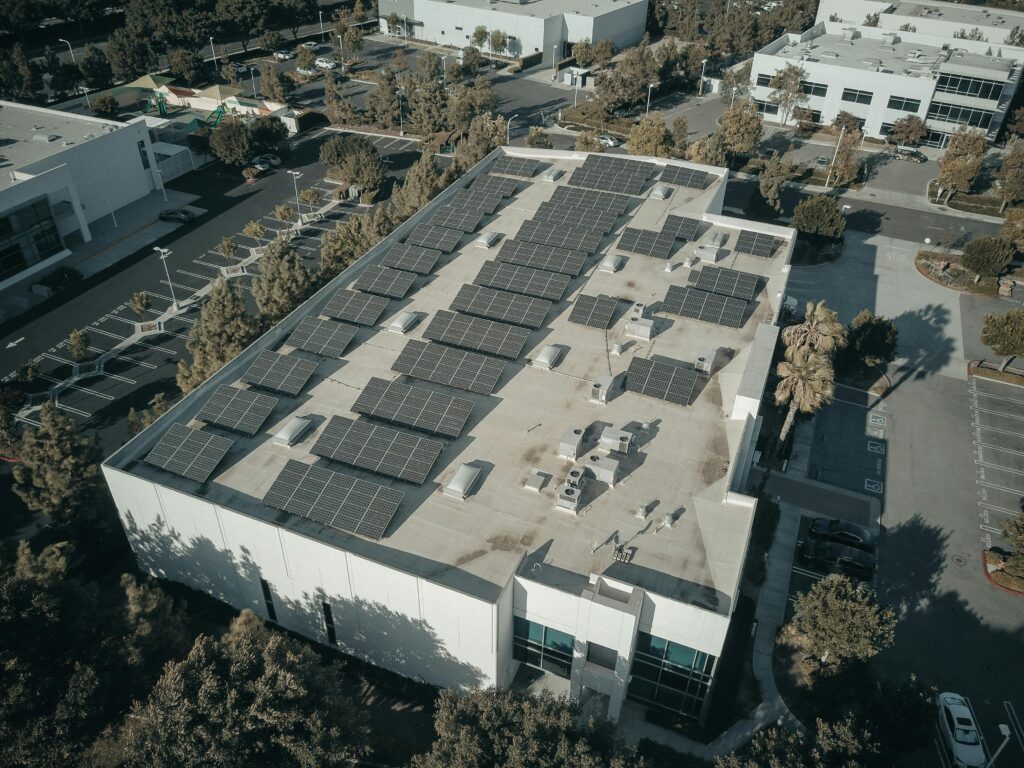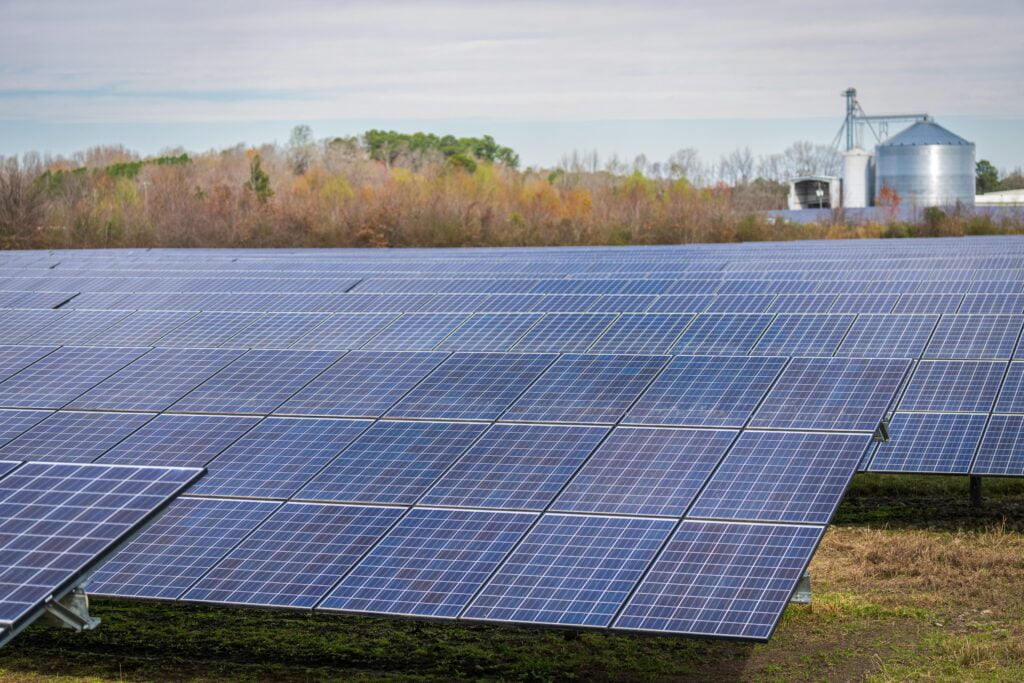History Of Solar Energy
Ancient Civilizations and Their Use of Sunlight
Ancient civilizations, such as the Greeks, Romans, and Chinese, found ways to use sunlight for their daily needs. They designed their homes and buildings to capture the warmth of the sun during the day.

This method, known as passive solar heating, helped keep their living spaces warm without using fuel or electricity. In China, ancient architects even oriented their buildings towards the sun to maximize solar heat during the colder months.
Examples from Greek, Roman, and Chinese Cultures
In ancient Greece and Rome, large south-facing windows were common in homes and public buildings. These windows allowed sunlight to enter and warm the interiors naturally. In some cases, mirrors were used to reflect and concentrate sunlight for heating purposes, such as lighting fires or warming water.
Passive Solar Heating Techniques
Passive solar heating techniques were also used in ancient China, where homes were built with thick walls and insulated windows to trap heat from the sun. This design helped regulate indoor temperatures and reduce the need for additional heating sources during the winter months. These early uses of solar energy demonstrate how ancient civilizations innovatively utilized the sun’s power for practical purposes.
Scientific Discoveries
The story of solar energy took a significant step forward in 1839 when Alexandre Edmond Becquerel discovered the photovoltaic effect. This discovery revealed that certain materials could generate an electric current when exposed to sunlight. Although initial experiments were primitive, they laid the groundwork for future advancements in solar technology.

Later, in 1905, Albert Einstein published a paper explaining the photoelectric effect, which provided further insights into how light could be converted into electricity. This theoretical work contributed to the understanding of solar cells, which were developed several decades later.
The breakthrough came in 1954 at Bell Labs in the United States, where scientists produced the first practical solar cell. This invention marked a turning point in solar energy history, as it could now convert sunlight directly into electricity with reasonable efficiency. These early discoveries and innovations set the stage for the rapid development of solar technology in the decades that followed.
Development of Solar Technologies
In the 1950s, the first solar panels were developed, primarily for use in space exploration. These early panels were expensive and inefficient compared to modern standards but represented a crucial step forward. They were used to power satellites and spacecraft, demonstrating the potential of solar energy in space applications.
Throughout the 1970s and 1980s, advancements in technology led to more affordable and efficient solar panels. Improvements in materials and manufacturing processes made solar cells more reliable and cost-effective. This resulted in a growing interest in solar energy for terrestrial applications, such as powering remote locations and providing electricity to off-grid communities.
By the 1990s, solar panels began appearing on rooftops and in large-scale solar farms around the world. Governments and businesses recognized the environmental and economic benefits of solar energy, leading to further investments in research and development. Today, solar technology continues to evolve, with ongoing efforts to improve efficiency, reduce costs, and expand its applications in renewable energy systems.
Solar Energy in the 20th Century
Early Space Applications
After World War II, solar technology found its first major applications in space exploration. Satellites and spacecraft began using solar panels to generate electricity for onboard systems. The reliability and durability of solar cells in the harsh conditions of space demonstrated their potential for practical use on Earth.
Response to Global Oil Crises
During the 1970s, the world faced several oil crises that highlighted the vulnerability of relying on fossil fuels. Countries sought alternative energy sources, including solar power, to reduce dependence on imported oil and mitigate economic impacts. This period marked a turning point for solar energy research and development, with increased investments in photovoltaic technology.
Advancements in Photovoltaic Technology
Throughout the 20th century, significant advancements were made in solar cell efficiency and cost-effectiveness. Scientists and engineers experimented with new materials and manufacturing processes to improve the performance of solar panels. Innovations such as silicon photovoltaic cells and thin-film solar technologies helped drive down production costs and increase energy conversion efficiency.
Expansion into Residential and Commercial Use
By the late 20th century, solar panels became increasingly accessible for residential and commercial applications. Improved manufacturing techniques and government incentives for renewable energy adoption spurred growth in the solar industry. Homeowners and businesses began installing solar arrays to reduce electricity bills and contribute to environmental sustainability efforts.
Modern Solar Energy
Current Trends in Solar Energy Adoption Worldwide
Global Expansion of Solar Photovoltaic Installations
In the 21st century, solar energy adoption has surged globally, driven by declining costs, technological advancements, and increasing environmental awareness. Countries around the world are ramping up their solar photovoltaic (PV) installations as a key strategy to diversify their energy sources and reduce carbon emissions. This expansion is supported by favorable government policies, financial incentives, and growing public demand for sustainable energy solutions.
Government Incentives and Policies
Governments worldwide have implemented a range of incentives and policies to promote solar power adoption. These include feed-in tariffs, tax credits, grants, and renewable energy targets. Such measures aim to stimulate investment in solar infrastructure, reduce financial barriers for consumers and businesses, and accelerate the transition to clean energy. Policy frameworks vary by region, with some countries offering robust support to bolster their renewable energy sectors.
Innovations in Solar Farms and Large-Scale Projects
Utility-Scale Solar Farms
Large-scale solar farms have emerged as significant contributors to global renewable energy capacity. These utility-scale projects span vast areas and utilize advanced solar panel technologies to maximize energy production. They play a crucial role in meeting growing electricity demand sustainably, supplying power to thousands of homes, businesses, and industries. The scalability and efficiency of these solar farms make them competitive alternatives to conventional fossil fuel power plants.
Technological Advancements
Technological innovations have propelled the efficiency and reliability of solar power generation. Advances in solar panel design, such as thin-film technology and bifacial modules, have increased energy conversion efficiency and lowered production costs.

Improved battery storage systems enable solar farms to store excess energy for use during periods of low sunlight, enhancing grid stability and reliability. Moreover, digital innovations in monitoring and control systems optimize performance and operational management of solar installations.
Integration of Solar Power into Smart Grids and Sustainable Cities
Smart Grid Technology
The integration of solar power into smart grids is revolutionizing energy distribution and management. Smart grids utilize advanced communication and control technologies to optimize the flow of electricity. They enable real-time monitoring of solar generation and consumption patterns, allowing utilities to balance supply and demand efficiently. By incorporating energy storage solutions and demand-response programs, smart grids enhance grid resilience and support renewable energy integration.
Sustainable Urban Planning
Cities worldwide are embracing solar energy as a cornerstone of sustainable urban development. Urban planners are integrating solar panels into building designs, public infrastructure, and community spaces to harness renewable energy and reduce environmental impacts. Solar-powered streetlights, electric vehicle charging stations, and rooftop solar installations are becoming common features in eco-friendly cities. These initiatives not only reduce carbon footprints but also enhance local energy independence and resilience against climate change impacts.
Environmental Benefits of Solar Energy
Reduction in Greenhouse Gas Emissions
Solar energy plays a crucial role in mitigating climate change by reducing greenhouse gas emissions. Unlike fossil fuels, solar power generates electricity without emitting harmful pollutants like carbon dioxide, sulfur dioxide, and nitrogen oxides. By displacing traditional energy sources, solar PV systems help lower overall greenhouse gas emissions and improve air quality, benefiting public health and the environment.
Lifecycle Sustainability
The lifecycle environmental impact of solar PV systems is generally lower compared to conventional energy sources. From manufacturing and installation to operation and decommissioning, solar panels produce minimal greenhouse gas emissions and environmental pollutants. Advances in recycling technologies enable the recovery and reuse of valuable materials from decommissioned solar panels, promoting circular economy principles and reducing waste.
Global Impact of Solar Energy
Economic Benefits and Job Creation
Employment Opportunities in the Solar Industry
Solar energy has emerged as a significant source of employment globally, creating millions of jobs across various sectors such as manufacturing, installation, maintenance, and research. The rapid growth of the solar industry has fueled demand for skilled workers and contributed to economic development in both developed and developing countries. Job opportunities span a wide range of roles, from solar panel manufacturing to project management and solar farm operation.
Economic Growth and Local Investment
The solar industry stimulates economic growth by attracting investments and fostering local manufacturing capabilities. Countries that invest in solar energy infrastructure benefit from increased revenue generation, reduced energy costs, and improved energy security. Solar projects often stimulate ancillary industries, such as construction and engineering, further boosting economic activity and creating a multiplier effect on local economies.
Environmental Sustainability
Reduction in Greenhouse Gas Emissions
Solar energy plays a crucial role in mitigating climate change by reducing greenhouse gas emissions. Unlike fossil fuels, which release carbon dioxide and other pollutants into the atmosphere during combustion, solar photovoltaic (PV) systems generate electricity without emissions. By displacing fossil fuel-based electricity generation, solar power helps lower overall greenhouse gas emissions and improve air quality, thereby mitigating the adverse effects of climate change on ecosystems and human health.
Resource Conservation and Sustainable Development
Solar energy promotes resource conservation and sustainable development by harnessing abundant sunlight to generate clean electricity. Solar PV systems minimize environmental impact during operation, requiring minimal water and producing negligible waste compared to conventional energy sources. Advances in solar panel recycling technologies further enhance sustainability by recovering valuable materials and reducing landfill waste.
Energy Security and Independence
Diversification of Energy Sources
Solar energy enhances energy security by diversifying the sources of electricity generation. Countries with ample sunlight resources can reduce dependence on imported fossil fuels, thereby mitigating geopolitical risks and price volatility in global energy markets. By decentralizing energy production, solar power strengthens national energy resilience and improves energy access for remote and underserved communities.
Rural Electrification and Energy Access
Off-grid solar solutions, such as solar home systems and mini-grids, play a crucial role in expanding energy access in rural and remote areas. These decentralized solar installations provide clean and reliable electricity to households, schools, healthcare facilities, and businesses that are not connected to centralized power grids. Access to solar energy promotes socioeconomic development, enhances educational opportunities, and supports livelihoods in off-grid communities.
Challenges and Future Prospects
Financial Barriers and Cost Reduction
Initial Investment Costs
One of the primary challenges of solar energy adoption is the initial cost of installing solar PV systems. While the cost of solar panels has decreased significantly over the years, upfront investment remains a barrier for residential, commercial, and industrial consumers. Governments, financial institutions, and international organizations are exploring innovative financing mechanisms, such as subsidies, tax incentives, and low-interest loans, to make solar energy more affordable and accessible.
Economics of Scale and Market Competitiveness
Economies of scale and technological advancements are driving down the cost of solar energy production, making it increasingly competitive with conventional fossil fuel-based electricity generation. Continued research and development in solar panel efficiency, energy storage solutions, and grid integration technologies will further enhance cost-effectiveness and market competitiveness of solar power.
Technological Advancements and Grid Integration
Advances in Solar Panel Technology
Technological innovations in solar panel design and manufacturing have improved energy conversion efficiency and durability. Innovations such as monocrystalline and polycrystalline silicon cells, thin-film technologies, and bifacial modules are enhancing the performance of solar PV systems in various environmental conditions. Ongoing research in next-generation solar technologies, such as perovskite solar cells and tandem solar cells, holds promise for further efficiency gains and cost reductions.
Energy Storage Solutions
Energy storage technologies, such as batteries and pumped hydro storage, play a critical role in overcoming the intermittency of solar energy and enhancing grid stability. Advances in battery storage capacity, efficiency, and cost-effectiveness are enabling greater integration of solar power into existing electricity grids. Smart grid technologies, coupled with demand-response programs and grid-scale storage solutions, optimize energy management and maximize the utilization of solar energy resources.
Policy Support and Regulatory Frameworks
Renewable Energy Policies and Targets
Governments worldwide are implementing renewable energy policies, targets, and regulatory frameworks to accelerate the deployment of solar energy. Feed-in tariffs, renewable portfolio standards, tax incentives, and competitive procurement mechanisms incentivize investment in solar power infrastructure and facilitate market growth. Long-term policy stability and regulatory certainty are essential to attract private sector investments and drive sustainable development of the solar industry.
International Cooperation and Climate Agreements
International cooperation and climate agreements, such as the Paris Agreement, provide frameworks for countries to collaborate on climate mitigation efforts and transition to renewable energy sources. Commitments to reduce greenhouse gas emissions and achieve carbon neutrality are driving global efforts to expand renewable energy capacities, including solar power. Multilateral initiatives and financial mechanisms support developing countries in adopting clean energy technologies and achieving sustainable development goals.
Conclusion
Solar energy has evolved from a niche technology to a mainstream solution for sustainable energy generation and environmental stewardship. Its widespread adoption is driven by economic, environmental, and social imperatives, offering a pathway to decarbonize electricity systems and mitigate climate change impacts. As the global community strives towards a low-carbon future, continued innovation, policy support, and international cooperation will be essential to realize the full potential of solar energy in achieving a clean, resilient, and inclusive energy transition.

If You have any doubts or queries,Feel free to contact Us On Our LinkedIn Page!
Frequently Asked Questions (FAQ) about Solar Energy
1. What is solar energy?
Solar energy refers to the radiant light and heat from the sun that is harnessed using various technologies, such as solar photovoltaic (PV) panels, to generate electricity or provide heat for residential, commercial, and industrial applications.
2. How do solar panels work?
Solar panels, also known as solar PV modules, convert sunlight into electricity through the photovoltaic effect. When sunlight strikes the semiconductor material within the solar cells, it creates an electric current. This direct current (DC) is then converted into alternating current (AC) using inverters to power homes, businesses, and the electricity grid.
3. What are the benefits of solar energy?
Solar energy offers numerous benefits, including:
Renewable:
It is a renewable energy source, meaning it is inexhaustible and abundant.
Clean:
It produces electricity without emitting greenhouse gases or air pollutants.
Cost-effective:
Once installed, solar panels have low operating costs and can provide long-term energy savings.
Energy independence:
- It reduces reliance on imported fossil fuels and enhances energy security.
Job creation:
- It supports local economies through job creation in manufacturing, installation, and maintenance sectors.
4. Is solar energy suitable for my home or business?
Solar energy is suitable for a wide range of applications, from residential rooftops to large-scale industrial installations. Factors such as sunlight availability, roof orientation, shading, and local regulations may influence the feasibility and effectiveness of solar PV systems. Consulting with a solar energy provider can help assess your specific needs and determine the best solar solution for your home or business.
5. What is the lifespan of solar panels?
Most solar panels are designed to last for 25 to 30 years or more with proper maintenance and care. Manufacturers typically offer warranties ranging from 20 to 25 years for performance and product durability. Regular maintenance, such as cleaning and monitoring, can extend the lifespan and efficiency of solar PV systems.
6. How much do solar panels cost?
The cost of solar panels depends on various factors, including system size, location, installation complexity, and equipment quality. Prices have decreased significantly over the years due to technological advancements and economies of scale. Incentives such as tax credits and rebates can further reduce upfront costs. It’s advisable to obtain quotes from multiple solar installers and explore financing options to find the most cost-effective solution for your budget.
7. Are there government incentives or rebates available for installing solar panels?
Many governments offer incentives and financial incentives to encourage the adoption of solar energy. These may include federal or state tax credits, rebates, grants, and net metering programs. Policies and incentives vary by region, so it’s recommended to check with local authorities or a solar installer to explore available options and eligibility criteria.
8. What is net metering?
Net metering is a billing mechanism that allows solar PV system owners to receive credit for excess electricity they generate and export to the grid. During times when solar panels produce more electricity than is consumed onsite, the surplus energy is fed back into the grid. The utility credits the owner for the exported electricity, offsetting future electricity bills. Net metering policies vary by utility and jurisdiction.
9. Can solar panels work during cloudy or rainy days?
Solar panels can still generate electricity on cloudy or rainy days, although their output may be reduced compared to sunny days. Modern solar panels are designed to capture diffused sunlight and can produce electricity even under overcast skies. Additionally, energy storage systems, such as batteries, can store surplus energy generated during sunny periods for use during low-light conditions, enhancing the reliability of solar PV systems.
10. What are the environmental benefits of solar energy?
Solar energy contributes to environmental sustainability by reducing greenhouse gas emissions and air pollutants associated with fossil fuel combustion. It helps mitigate climate change impacts, preserve natural resources, and protect ecosystems. By promoting clean energy generation, solar power plays a crucial role in achieving global climate goals and fostering a cleaner, healthier planet for future generations.
One Response